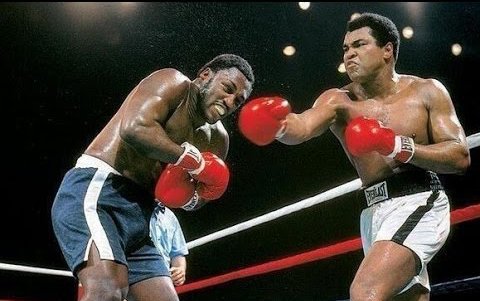Milestones in Media
Electronic mass media rest on the genius and hard work of thousands of scientists, inventors and engineers. But real progress comes only when an entrepreneur or company gathers up the latest technology and creates a new product or service that impacts society in a big way. Here are our list of such progress — the major plot points in our story of electronic media. (Our list is subject to change as our understanding of media history deepens.)
1920 – Westinghouse invests its money and its prestige in AM station KDKA Pittsburgh, marking the beginnings of commercial broadcasting and electronic mass media. Engineer Frank Conrad and executive Harry P. Davis lead the effort.
Two days after KDKA’s historic first broadcast, the Westinghouse publicity department recreated the scene in the studio/transmitter “shack” at the company works in Turtle Creek, Pa. The now iconic photo includes the men who actually produced the first broadcast (l-r): R.S. McClelland, William Thomas, Leo Rosenberg and John Frazier.
1926 – With the launch of NBC, RCA under the direction of David Sarnoff establishes the first broadcast network -- an economic model for mass media and mass marketing that endures to this day.
1939 – After more than a decade of intense R&D driven by David Sarnoff, RCA introduces a complete TV system at the New York World’s Fair. But the outbreak of WW II slows its roll out.
1948 – John Walson, an appliance store owner in Mahanoy City, Pa., figures out that he can sell more TVs if he erects a common TV antenna and strings wires from it to homes that can’t receive TV off air. Cable TV is born!
1955 – The Ampex Corp., led by Alexander M. Poniatoff, introduces the world’s first practical video recorder, revolutionizing TV production and distribution.
1975 – With its telecast of the third Ali-Frazier fight (“The Thrilla in Manilla”), Jerry Levin-led HBO invents modern cable by demonstrating that the new breed of domestic communications satellites could be used to create TV networks at a low cost. The broadcasters’ TV oligopoly is broken. Other networks such as C-SPAN, ESPN, USA, Superstation WTBS, CNN and BET proliferate and fuel the wiring of big cities.
1984 – Motorola introduces its first cell phone in the U.S. The phones become smaller, cheaper and more reliable over the next two decades. Configured as smartphones, they eventually become a major and mobile medium for accessing mass media. Engineer Martin Cooper is credited with marshalling the Motorola resources to make it happen.
Whatever it is, the way you tell your story online can make all the difference.
1994 – After decades of development, the internet emerges in full force as a mass medium when Jim Clark and Marc Andreessen at Netscape introduce a consumer-friendly browser that makes surfing the World Wide Web useful and fun.
1994 — Hughes Space and United States Satellite Broadcasting, a subsidiary of Hubbard Broadcasting, launches DirecTV, a satellite service that beams cable programming to homes beyond the reach of earthbound cable systems. Small 18-inch satellite receive antennas — dishes — began popping up on rooftops all over America. Two years later, a competitor, Charlie Ergen’s Dish Network, takes flight.
1996 — To find what you were looking for on the Web, search engines appear directing you to relevant pages. The one that does it best is Google, founded by Larry Page and Sergey Brin.
2003 — Sprung from the online communcations service providers, bulletin boards and web blogs, social media begin making a real impact with the debut of MySpace, spearheaded by Brad Greenspan. In the years that follow come Facebook (2004), YouTube (2004), Twitter (2006), Tumblr (2007), Instagram (2010), Snapchat (2011) and TikTok (2016).
2007 — Reed Hastings and Marc Rudolph lead the way into streaming by shifting Netflix from renting DVDs by mail to streaming TV shows and movies via the internet and charging a monthly fee. Over the next 15 years, Hollywood and broadcast and cable programmers embrace streaming as their future.
2007 — The digital world takes a big leap forward when Apple’s Steve Jobs introduces the iPhone. It sets a new standard for what a smartphone can be, providing access to all the media the internet has to offer.





